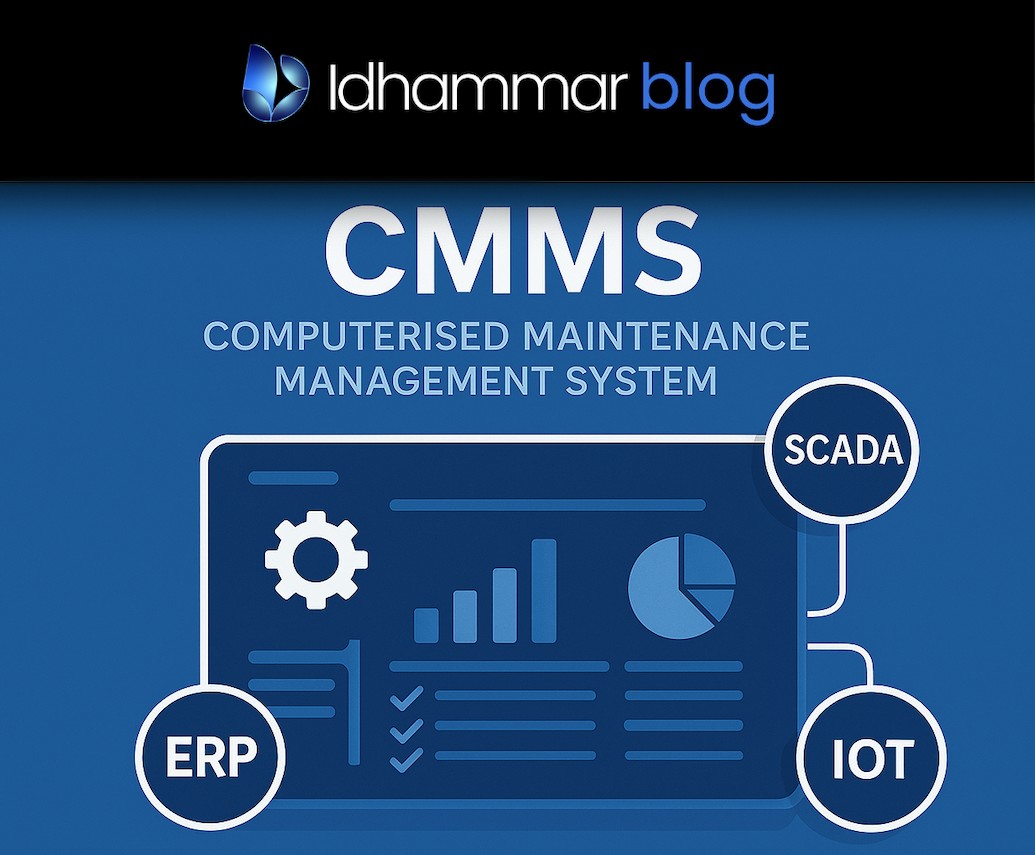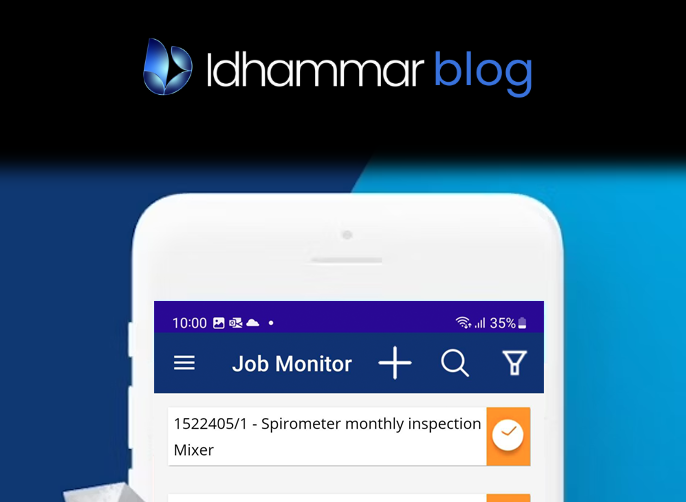In recent years, we’ve seen significant digital transformation across various sectors, and maintenance management is no exception. Traditional maintenance programs are being transformed, enabling businesses to achieve greater efficiency, reduce costs, and improve asset longevity.
In fact, the value of the CMMS software market has now reached USD 9.15 billion and its trajectory is promising.
With the new year upon us, it’s the opportune moment for maintenance managers to reassess their strategies and leverage the latest capabilities that technology brings. So, read on to find out what’s on the horizon this year and beyond.
Mobile CMMS Software
Mobile CMMS solutions are growing in popularity. They allow maintenance personnel to access and input data on the go using smartphones or tablets, and this mobility increases efficiency, as technicians can receive instant notifications, access maintenance history, and update work orders from the field. (We introduced our own mobile solution not long ago, Idhammar Connect.)
As we progress into 2024, mobile maintenance solutions are expected to become more robust, with enhanced features such augmented reality (see below) and integrated communication tools.
QR codes are also being incorporated into asset tracking more often. For example, users could scan a QR code on an asset to discover its maintenance history, scheduled maintenance tasks, priority status, and so on. They’re also being used for inventory management purposes.
Augmented Reality
AR is becoming more common in many industries and is sometimes used in conjunction with computerized maintenance management software.
It overlays digital information onto physical equipment and facilities, enabling maintenance teams to see real-time data, instructions, and diagnostics directly within their field of view. This reduces the need for bulky manuals and simplifies complex tasks, allowing for quicker, more precise maintenance work.
Technicians can virtually identify issues, receive guided instructions, and verify their work, enhancing both the speed and quality of maintenance procedures. As such, this technology is especially useful in industries where equipment complexity and safety are key considerations.
Forecasts state that by the end of the year, around USD 4.1 billion will have been invested in AR and VR for industrial maintenance.
IoT, AI, 5G & Robotics
The Internet of Things (IoT) has been a buzzword for a long time, but its practical applications in maintenance management are just beginning to be fully realised.
IoT devices can continuously monitor asset performance and health, providing real-time data which is passed to the Computerized Maintenance Management System. This continuous flow of data enhances the predictive capabilities of maintenance software, leading to more accurate and timely maintenance interventions. Also, the datasets gathered are more complete thanks to IoT, enabling more robust maintenance strategies.
While this technology might not seem like it’s on our doorstep already, there’s evidence to suggest that its application within manufacturing could expand fairly soon.
For example, a case study by Ericsson, Amazon Web Services and Hitachi America R&D demonstrated the benefits of integrating IoT and AI (computer vision) using 5G networks.
The results were more reliable defect detection and quality inspections. Thanks to computer vision, defects were detected at a sub-millimetre level, with multiple components analysed simultaneously. In addition, the use of 5G demonstrated the viability of IoT connectivity.
According to Industrial Machinery Digest, software development for robotics applications will accelerate as code becomes more reusable. Reusability is vital for efficiency in software development, so this may hasten the advancement of robotics in the industry.
Predictive Maintenance
One of the most impactful trends in maintenance management is predictive maintenance, with its anticipation of equipment failures before they occur.
This preventive maintenance approach is nothing new and has become more common as it minimises unplanned downtime, extends the life of equipment, and significantly reduces maintenance costs.
The global predictive maintenance market is expected to be worth USD 12.3 billion this year, skyrocketing to USD 64.3 billion by 2030. Some sources looking further ahead expect it to be valued at USD 79.9 billion by 2033. The top five countries using predictive maintenance are the US, Canada, Germany, the UK, and France.
It’s expected that AI-enabled image analytics will become more common in the context of predictive maintenance, helping minimise human error.
Prescriptive Maintenance
This approach goes a step further than predictive maintenance – it also provides recommendations on how to prevent or mitigate these failures. This can include adjustments to operations, changes in the maintenance schedule, or other strategic interventions to improve equipment performance and lifespan.
The prescriptive maintenance market is forecast to grow significantly between now and 2026. The largest market share will be help by the US, while the fastest growing market is expected to be Asia-Pacific.
Leveraging Business Intelligence in Maintenance Management
Business Intelligence (BI) tools can transform raw data into actionable intelligence, thereby enhancing maintenance strategies. The significance of BI in maintenance management is increasing and it’s expected that real-time monitoring will become more common in the near future. As a result, more companies will require robust analytics platforms, especially those implementing IoT solutions.
Sustainable Maintenance Operations
With governments across the world introducing new regulations to combat climate change, the pressure mounts for all industries to adopt more sustainable practises. As such, this continues to be a crucial focus for 2024. Eco-friendly maintenance involves using energy-efficiency technologies, optimising resource use and recycling components.
CMMS software has the potential to play a pivotal role in driving such practices. It can help your maintenance team to reduce energy consumption and waste and can be used to monitor the environmental impact of maintenance activities, ensuring compliance (this is possible with the OEE Monitoring module that comes with our solutions).
Integrating CMMS Software with Enterprise Systems
The best CMMS software does not operate in a silo. Instead, it integrates with other software such as Enterprise Resource Planning (ERP) systems, human resources systems, and Customer Relationship Management (CRM) systems. This is crucial for seamless data flow and better decision-making.
After all, maintenance activities greatly impact other departments; downtime affects production, which is something customer service must be informed about. With CMMS software being a crucial ingredient in achieving business objectives, it’s likely that in 2024, more solutions will offer easy integration capabilities, enabling a unified view of operations.
Summary
As 2024 progresses, the maintenance management landscape will continue evolving shaped by technological innovations and strategic foresight.
Predictive and prescriptive maintenance is growing in importance due to the increasing need to reduce maintenance costs. Sustainability is as relevant as ever and mobile CMMS solutions will become more common, introducing features such as AR.
The adoption of IoT, 5G, and BI will become more widespread and more companies will seek to integrate maintenance software with other enterprise systems.
Ready to take your maintenance processes to the next level in 2024? Then contact us to book a demo of our market leading software.





